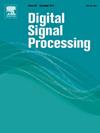Phase transitions with structured sparsity
IF 2.9
3区 工程技术
Q2 ENGINEERING, ELECTRICAL & ELECTRONIC
引用次数: 0
Abstract
While phase transition phenomena in compressed sensing have been rigorously established for simple sparse signals by Donoho and others, the behavior of structured sparse signals—such as block or tree patterns common in real-world applications—remains theoretically underexplored. This paper addresses this critical gap by extending phase transition analysis to structured sparsity models through the geometric lens of high-dimensional convex polytope projections.
Our investigation reveals that weak thresholds, representing the proportion of faces lost after random projection, remain invariant across both simple and structured sparsity frameworks. In contrast, strong thresholds, which determine exact recovery guarantees, vary significantly according to structure type. We derive explicit mathematical expressions for these thresholds in both block-structured and tree-structured signals, demonstrating how additional structural constraints modify recovery boundaries. For block-sparse signals, we prove that the strong threshold rises as the number of blocks increases. Similarly, tree-sparse signals exhibit distinct threshold behaviors depending on whether sparsity falls below or exceeds the thresholds.
These findings provide theoretical justification for the empirical success of structured sparsity models in applications ranging from medical imaging to radar systems, where they consistently outperform traditional compressed sensing approaches.
求助全文
约1分钟内获得全文
求助全文
来源期刊

Digital Signal Processing
工程技术-工程:电子与电气
CiteScore
5.30
自引率
17.20%
发文量
435
审稿时长
66 days
期刊介绍:
Digital Signal Processing: A Review Journal is one of the oldest and most established journals in the field of signal processing yet it aims to be the most innovative. The Journal invites top quality research articles at the frontiers of research in all aspects of signal processing. Our objective is to provide a platform for the publication of ground-breaking research in signal processing with both academic and industrial appeal.
The journal has a special emphasis on statistical signal processing methodology such as Bayesian signal processing, and encourages articles on emerging applications of signal processing such as:
• big data• machine learning• internet of things• information security• systems biology and computational biology,• financial time series analysis,• autonomous vehicles,• quantum computing,• neuromorphic engineering,• human-computer interaction and intelligent user interfaces,• environmental signal processing,• geophysical signal processing including seismic signal processing,• chemioinformatics and bioinformatics,• audio, visual and performance arts,• disaster management and prevention,• renewable energy,
 求助内容:
求助内容: 应助结果提醒方式:
应助结果提醒方式:


